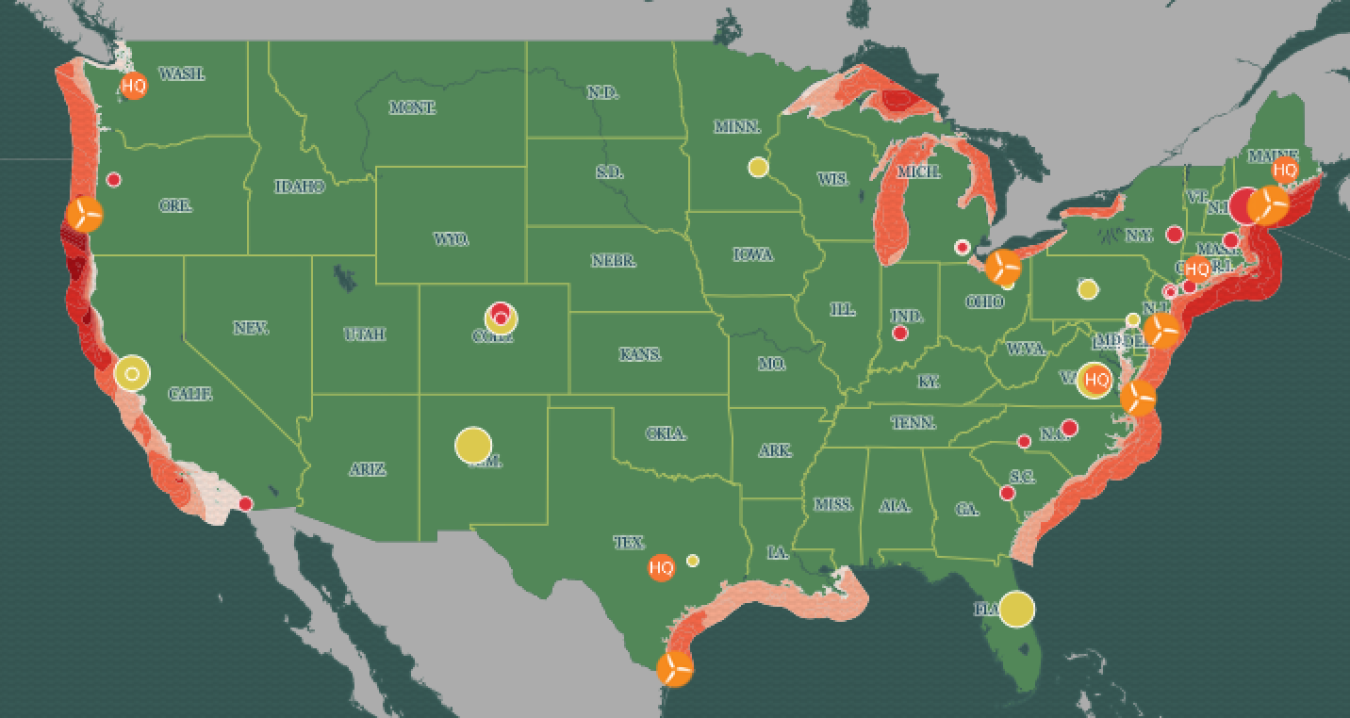Today the Energy Department announced investments in seven offshore wind demonstration projects. Check out our map to see where these projects will...
December 12, 2012What does this project do?
The 2012 investments support innovative offshore installations for commercial deployment by 2017.
The 2011 grants were targeted at projects that aim to either improve the technology used for offshore wind generation or remove the market barriers to offshore wind generation.
Today the Energy Department announced investments in seven offshore wind demonstration projects. These projects are part of a broader effort to launch an offshore wind industry in the United States, and support innovative offshore installations for commercial deployment by 2017. Offshore wind is a large, untapped energy resource, with the potential to generate 4,000 gigawatts of clean electricity, support up to 200,000 manufacturing, construction, operation and supply chain jobs across the country and drive over $70 billion in annual investments by 2030, according to a new report commissioned by the Energy Department. We’ve created this map to show where these projects will be located and provide some context for the larger offshore wind effort.
The red gradient shows the yearly average wind speed above the ocean in that location. Darker reds mean higher wind speeds, and the wind farms (orange blade symbols) are set far enough from land to take advantage of the right combination of wind speed, water depth, and a number of other factors. The exact process for choosing a location (called siting) varies by project, but the Maine Department of Conservation has a short introduction to siting that is worth a look.
If you want to learn more about these projects, just click on them with your mouse:
Here’s a full list of the project descriptions. In addition to the 2012 project grants, this map also displays 42 2011 grants in support of the offshore wind industry (the red and gold markers):
Unlike the 2012 grants, the 2011 funding was not given directly to offshore wind projects, but was instead targeted at projects that aim to either improve the technology used for offshore wind generation or remove the market barriers to offshore wind generation. For example, four projects received $15.3 million to research and develop innovative rotor and control systems designs to reduce capital costs of these systems by up to 50 percent, while another four projects will receive $2.5 million to study and plan for the integration of offshore wind energy into the electrical grid, increasing the viability of commercial-scale offshore wind generation.
Along with the wind project developer HQs, these projects demonstrate that the economic “footprint” of offshore wind extends far inland to include much of the United States, supporting scientists, engineers, manufacturers and construction workers across the country.


